CEDRIG облегченный
Файл PDFHorti-Sempre Phase 2, Nacala Corridor in Northern Mozambique
Обзор
Информация общего характера
Автор
Michael Fink
Последнее обновление
June 2018г.
Общая цель
The overall objective of Horti-Sempre is to increase the annual net income of 25,000 smallholders by 30% against baseline by supporting the growth of the horticultural sector in Northern Mozambique in view of its proven importance as income creator.
Страна
- Мозамбик
Бюджет
6'500'000 CHF
Продолжительность
01/2017 - 12/2020 (48 months)
Аннотация
Описание
The overall objective of the Horti-Sempre Phase 2 Project is to increase smallholder’s annual net income by 30% against baseline by supporting the growth of the horticultural sector in Northern Mozambique in view of its proven importance as income creator. To fulfil its mission and reach the overall objective, Swisscontact proposes for Horti-sempre Phase 2 a logic of intervention based on three main Outcomes that unfold around three main project components namely (1) inputs and practices, (2) irrigation and (3) sector competitiveness. OUTCOME No 1: Productivity of horticultural smallholders in the Nacala Corridor in Northern Mozambique increased OUTCOME No 2: Horticultural smallholders in the Nacala Corridor in Northern Mozambique increased their area under irrigation OUTCOME No 3: Market responsiveness and competitiveness of the horti-cultural sector in Northern Mozambique is increased The three components will be complemented with two transversal topics: Women’s Economic Empowerment (WEE) throughout the different interventions and through special women targeted interventions and Access to existing funding options. Based on experience from Phase 1, Swisscontact beliefs that Horti-Sempre Phase 2 has the potential to reach 10'000 semi-commercial and 15'000 subsistence male and female smallholders in Northern Mozambique increasing their income by up to 30%.
Сектора, требующие оперативного вмешательства
- Сельское хозяйство
- Продовольственная безопасность
- Развитие сельских районов
- Управление водными ресурсами
Документы
Изображения
Логотипы
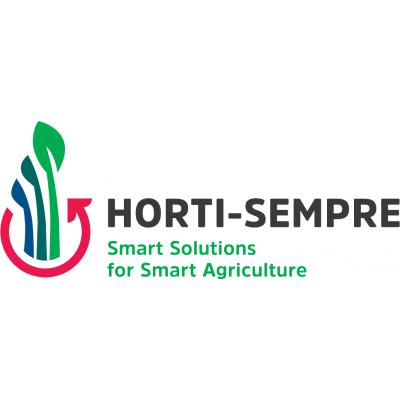


Факторы риска
Угрозы, возникающие в результате ухудшения состояния окружающей среды
Название угрозы
Деградация (земель, почвы, экосистем, биоразнообразия)
Подверженность
Да
Последствие
Key consequences are lower yields due to degraded soil and higher need of farmers to use inputs (fertilizers)
Степень вероятности
Возможно
Масштаб
Средний ущерб
Уровень риска
Средний уровень риска
Название угрозы
Загрязнение вод (поверхностных и подземных)
Подверженность
Да
Комментарии
Water pollution mainly in peri-urban areas due to urban water and soil contamination (e.g. from factories, waste, etc.).
Последствие
Key consequences are the loss in product quality, as well as potential health risks for consumers. Assessment of hazard is difficult because of limited data availability on water and soil quality.
Степень вероятности
Возможно
Масштаб
Небольшой ущерб
Уровень риска
Низкий уровень риска
Название угрозы
Вредители и эпидемии
Подверженность
Да
Комментарии
Pests and epidemics occur because of poor crop rotation and lack of knowledge or availability of properly formulated defensives (pesticides, insecticides, fungicides). Pests and epidemics are ocurring more frequently during the hot and rainy season compared to the cold and dry season.
Последствие
Key consequences are crop losses (sometimes failure) and that farmers avoid production in warmer and wetter months of the year
Степень вероятности
Возможно
Масштаб
Средний ущерб
Уровень риска
Средний уровень риска
Природные угрозы (гидрометеорологические и геологические)
Название угрозы
Аномально высокая температура
Подверженность
Да
Комментарии
According to the World Bank, the number of hot days per year increased by 25 in the last 40 years, and much of this has occurred during the southern hemisphere autumn. This corresponds to the first harvest cycle of many major grains across the country, with significant implications for agricultural pests and yields.
Последствие
Key consequences include a shortening of the growing season, crop failure (no yield) or crop losses (lower yields)
Степень вероятности
Весьма вероятно
Масштаб
Средний ущерб
Уровень риска
Высокий уровень риска
Название угрозы
Засуха
Подверженность
Не уверен
Комментарии
Since the 1960s, mean rainfall has decreased by an average of 2.5 millimeters per month (3.1%) per decade. Increased rainfall over the northern regions, highly variable conditions in the central regions, and persistent drought periods coupled with episodic floods in the south. In Northern Mozambique, seasonal droughts are occurring, meaning that rains are delayed.
Последствие
Delayed rains result in loss of seeds of rainfed crops (e.g. maize) and the need to rebuy and re-sow crops
Степень вероятности
Возможно
Масштаб
Средний ущерб
Уровень риска
Средний уровень риска
Название угрозы
Бури, торнадо, ураганы, сильный ветер, пылевые бури
Подверженность
Да
Комментарии
Frequency of storms has increased, but events are seasonally concentrated and farmers normally wait with sowing until the risk has decreased.
Последствие
Destruction of basic infrastructure and crops in early stage of growth
Степень вероятности
Маловероятно
Масштаб
Средний ущерб
Уровень риска
Низкий уровень риска
Название угрозы
Наводнения, внезапные паводки
Подверженность
Да
Комментарии
The proportion of days with heavy rainfall events has increased by 2.6% per decade according to the World Bank. The number of days with heavy rainfall currently amounts to ~25 per year. However, events are seasonally concentrated and farmers normally wait with sowing until this risk is lower.
Последствие
Destruction of basic infrastructure and crops in early stage of growth, destruction of trade infrastructure (e.g. bridges and roads)
Степень вероятности
Возможно
Масштаб
Средний ущерб
Уровень риска
Средний уровень риска
Название угрозы
Erratic Rains
Подверженность
Да
Комментарии
Recently, rainfalls in Northern Mozambique are out of usual patterns which farmers rely on. Tendency towards delayed rainfalls.
Последствие
It is difficult for farmers to predict the start of the rainy season. Due to a delayed start of the rainy season, the growing cycle is postponed into the hot season when it is difficult to produce horticulture. Higher risk of pests due to humidity.
Степень вероятности
Весьма вероятно
Масштаб
Средний ущерб
Уровень риска
Высокий уровень риска
Угрозы, возникающие в результате изменения климата (и изменчивости климата)
Название угрозы
Общие тенденции к повышению или снижению среднегодовых температур
Подверженность
Нет
Комментарии
Temperatures have generally increased by 0.6° C over the last fourty years, with particularly pronounced increases observed during the hot season (September - March). This increase has so far not considerably affected horticulture as the vegetables are produced during the drier and cooler winter months (April - August).
Название угрозы
Изменение частоты и интенсивности экстремальных климатических событий и взаимосвязанных стихийных бедствий (например, периодов экстремально высокой или низкой температуры, наводнений, засух, бурь, ураганов и циклонов)
Подверженность
Нет
Комментарии
Frequency of floods is increasing in the country, but mostly in the South and Centre where Mozambique does not control the dam system on the main river (e.g. Limpopo, Save, etc.). Other events (hurricans, cyclones, etc.) are also concentrated in the South/Centre.
Название угрозы
Смещения времен года
Подверженность
Да
Комментарии
A shift of seasons is observed in Northern Mozambique. Average annual rainfall has remained similiar (or even slightly increased). However, the precipitation patterns have changed. More erratic and locally concentrated rainfall is observed which often results in floods and a shorter growing season.
Последствие
Shorter growing season, longer idle season (hunger period - epoca de fome), unpredictability of sowing time, loss of first seeds (investment), extension of growing season into warmer months, loss of 1 or more production cycles
Степень вероятности
Весьма вероятно
Масштаб
Средний ущерб
Уровень риска
Высокий уровень риска
Нужна ли углубленная оценка риска?
Воздействие
Оцените воздействие на окружающую среду
Природоохранная сфера
Экосистемы
Компонент мероприятия
Underground Dams
Воздействие на окружающую среду
Small-scale rainwater retention increasing soil humidity potentially changing the ecosystem; limited additional pollution due to the plastic used to build the dam
Природоохранная сфера
Почва
Компонент мероприятия
Inputs (Fertilizer & Pesticides)
Воздействие на окружающую среду
Use of fertilizer and pesticides by horticulture smallholders is common. However, the used amounts are very limited due to a lack of financial resources. Thus, a small negative impact on the soils can be expected. The Project only gives technical advice following a market-approach and does not directly promote and increased use of fertilizers and pesticides for the horticultural production.
Оцените воздействие на изменение климата
Компонент мероприятия
Increasing volumes and de-seasonalization of horticulture production
Воздействие на изменение климата
Possibly decreasing emissions of Greenhouse Gases (GHG) due to local horticultural production and shorter transport routes. The international and inter-regional imports might decrease due to a higher availability of locally produced vegetables.

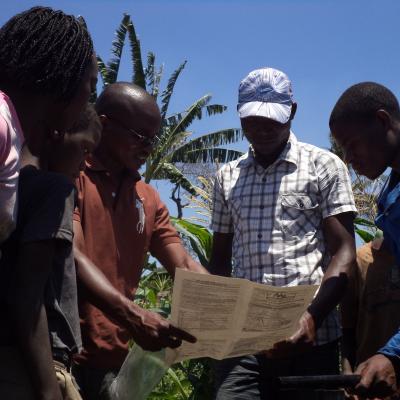
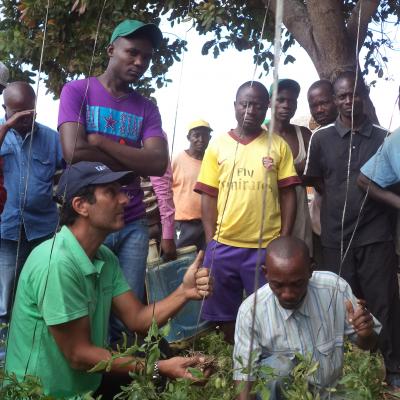
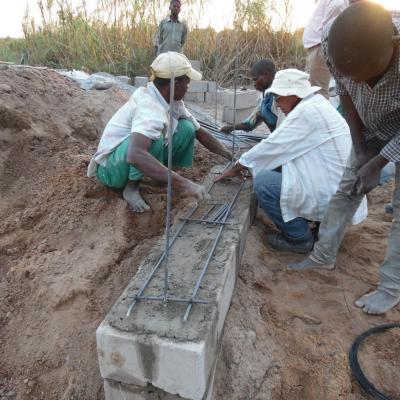
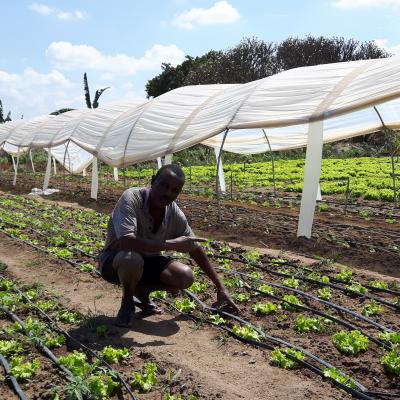
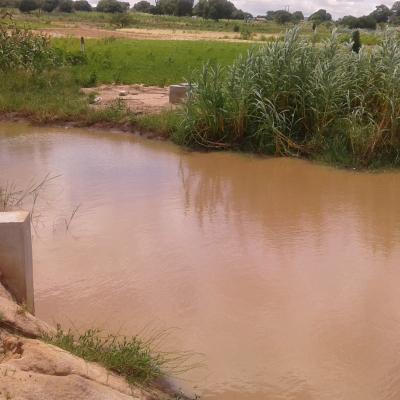
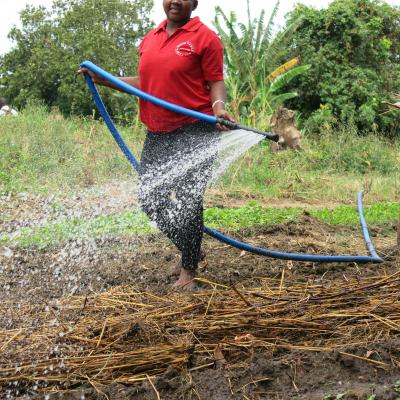
Комментарии
Soil degradation is frequently the result of poor conservation practices (no soil coverage, deep tillage, poor biodiversity) aggravated by heavy rains. Consequently, more inputs are needed resulting in a vicious circle of degradation.